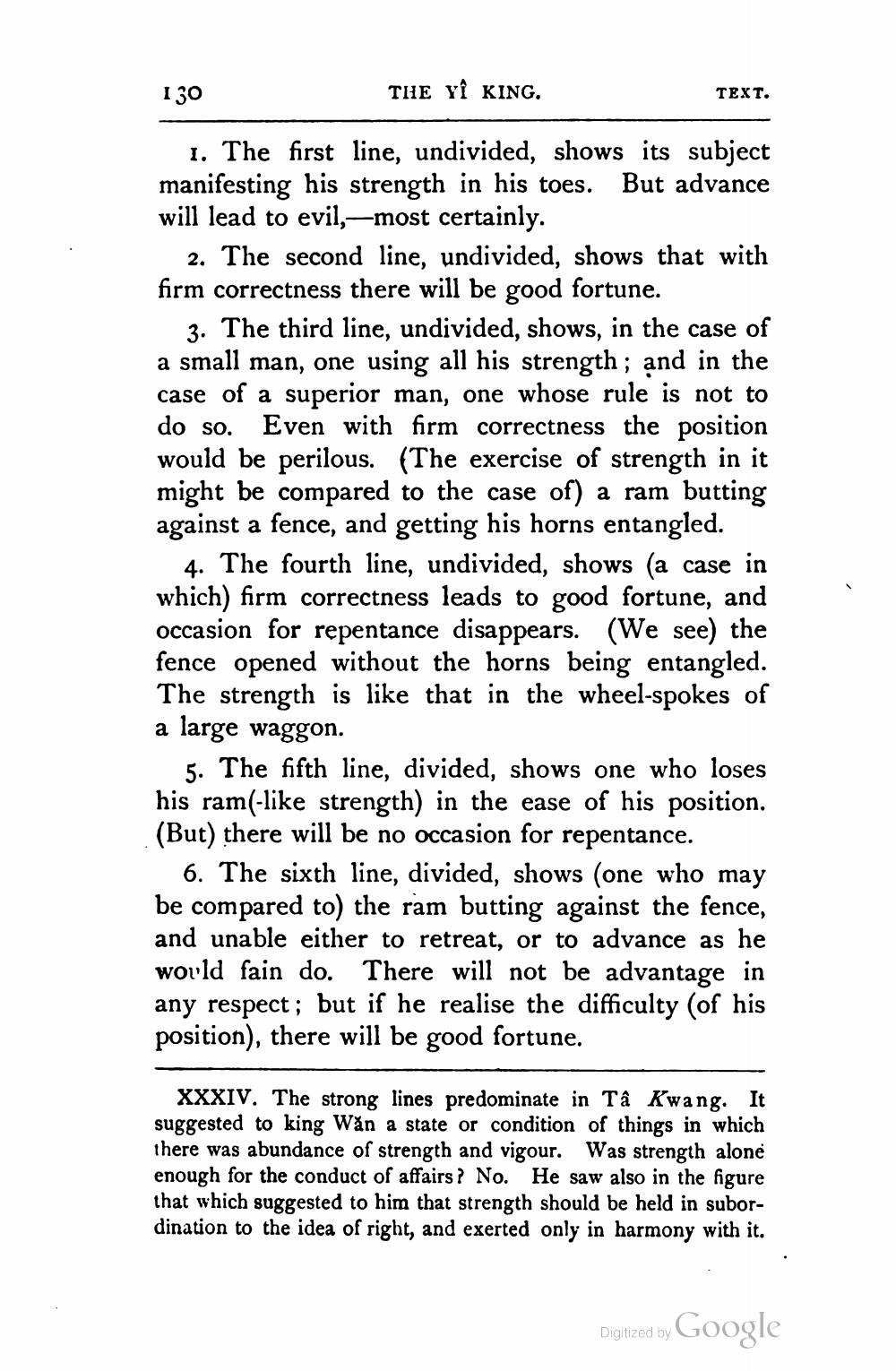________________
130
THE YŤ KING.
TEXT.
1. The first line, undivided, shows its subject manifesting his strength in his toes. But advance will lead to evil, -most certainly.
2. The second line, undivided, shows that with firm correctness there will be good fortune.
3. The third line, undivided, shows, in the case of a small man, one using all his strength; and in the case of a superior man, one whose rule is not to do so. Even with firm correctness the position would be perilous. (The exercise of strength in it might be compared to the case of) a ram butting against a fence, and getting his horns entangled.
4. The fourth line, undivided, shows (a case in which) firm correctness leads to good fortune, and occasion for repentance disappears. (We see) the fence opened without the horns being entangled. The strength is like that in the wheel-spokes of a large waggon.
5. The fifth line, divided, shows one who loses his ram(-like strength) in the ease of his position. (But) there will be no occasion for repentance.
6. The sixth line, divided, shows (one who may be compared to the ram butting against the fence, and unable either to retreat, or to advance as he would fain do. There will not be advantage in any respect; but if he realise the difficulty (of his position), there will be good fortune.
XXXIV. The strong lines predominate in Ta Kwang. It suggested to king Wăn a state or condition of things in which there was abundance of strength and vigour. Was strength alone enough for the conduct of affairs? No. He saw also in the figure that which suggested to him that strength should be held in subordination to the idea of right, and exerted only in harmony with it.
Digitized by Google




